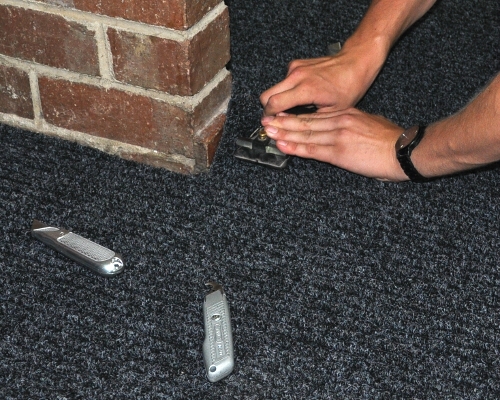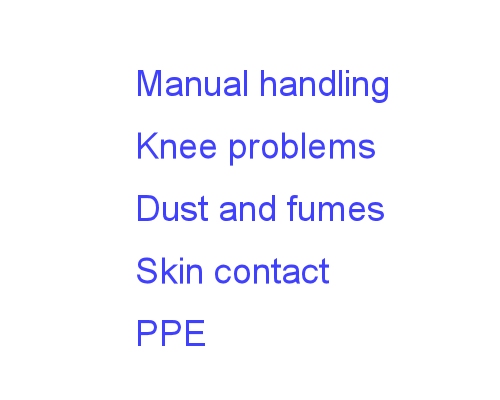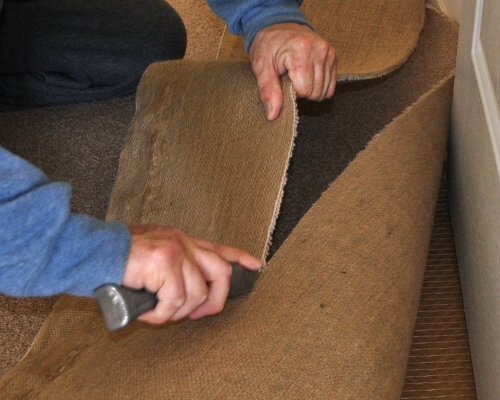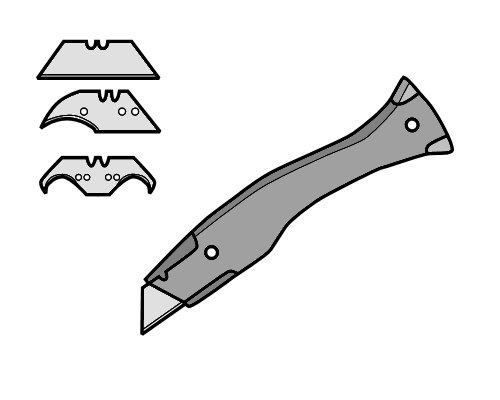Health and safety
 Audio for slide 1 (mp3 |6|KB)
Audio for slide 1 (mp3 |6|KB)
It sometimes seems that there are lots of rules and regulations when it comes to safety on-site.
But the basic formula for staying healthy and avoiding injures is really quite simple:
- use safe work practices at all times
- look for hazards before you start any new job and take actions to control them
- keep the workplace tidy
- maintain a professional attitude and don't take shortcuts.

 Audio for slide 2 (mp3 |6|KB)
Audio for slide 2 (mp3 |6|KB)
Many of the specific safety issues that you need to be aware of when you're installing carpet over a gripper system are covered in other units in this Flooring Technology resource.
Here they are in summary, linked to the orginal page on which they were discussed:
- Manual handling - including how to lift and carry heavy rolls of flooring.
- Knee problems - including injuries and chronic conditions caused by working on your knees.
- Dust and fumes - including dust from subfloor preparations and fumes from primers and adhesives.
- Skin contact with hazardous substances - including cement-based products and solvent.
- Personal protective equipment - including eye protection, ear protection and other items of PPE needed on-site.

 Audio for slide 4 (mp3 |6|KB)
Audio for slide 4 (mp3 |6|KB)
Here are some hints on knife safety.
- Keep the blade sharp - and change it whenever it starts to get blunt
- Keep your free hand clear - if you need to hold the material or a straight edge, make sure it's not in the direct line of the cut
- Don't over-reach while you're cutting - this will help you maintain maximum control
- Don't bend the blade sideways - they will snap easily if they're bent or twisted in the cut


Learning activity
Audio 5 (mp3 |6|KB)In addition to a carpet knife or utility knife, you will also use other cutting tools for trimming carpet and cushion underlay. Some of these are shown in the first lesson in this section - Tools and equipment.
It's very important to keep the cutting edges sharp while you're working - either by replacing disposable blades or by sharpening the dulled edge on an oilstone.
Why is it often said that you're less likely to suffer a cut injury from a sharp blade than from a blunt blade? How does its sharpness affect your cutting action, and the likelihood of an injury?






